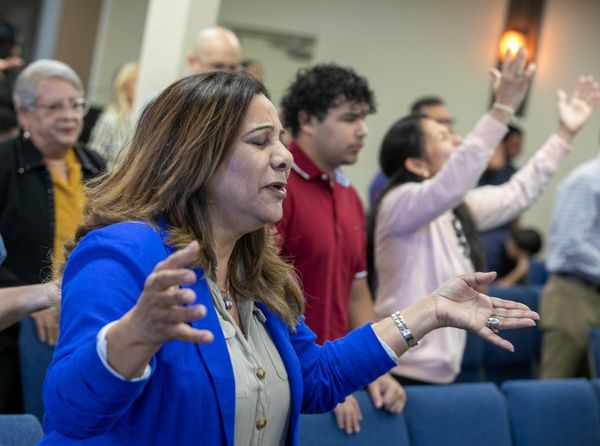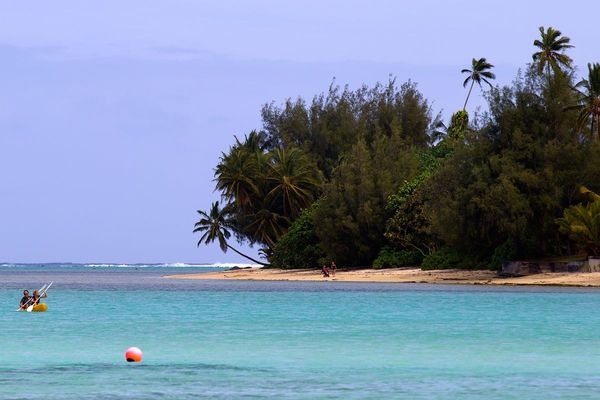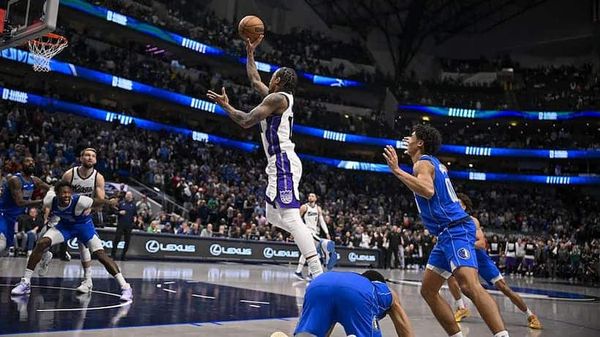
KYOTO -- It was about 30 years ago that the first boom in super-spicy dishes swept across Japan, with the umpteenth wave currently under way. One of the recent driving forces is a shopping street in the city of Muko, the nation's third smallest city, located adjacent to the city of Kyoto. Spicy food enthusiasts travel from across the country to try the ultra-hot dishes available only in Muko.
"I can't take this anymore!" screamed Mitsuko Saegusa, 35, her face drenched in sweat as she tackled one of the dishes at Min Min Mukomachi Chinese restaurant located in front of Hankyu Railway's Higashi-Muko Station in the city of Muko, Kyoto Prefecture, in early October.
Saegusa, who is from Suminoe Ward, Osaka, but spent part of her childhood in Thailand, said she was used to eating very spicy food.

She found the restaurant online after reading about the "Gekikara Shotengai" (Super-spicy Shopping Street). She ordered the gekikara chahan fried rice, but it was so hot that she only managed to eat half.
The dish Saegusa tried ranks second from the bottom in terms of spiciness on the restaurant's gekikara chahan menu. The spiciest is "Shinigami (grim reaper) chahan," which uses an unsparing amount of Carolina Reaper, a pepper 10 times hotter than habanero -- chefs have to wear a special mask to protect their throats when cooking the dish. Only about 20 diners have succeeded in finishing a plate of the dish so far.
After tackling the gekikara chahan, Saegusa, with all feeling gone from her tongue, questioned whether anything spicier could exist.

Despite being located near Kyoto, a city with abundant World Heritage sites, Muko lacked the crowds of its popular neighbor.
Alerted by a plan for a large shopping mall to be built nearby, young shop proprietors of the Muko shopping street exchanged ideas on how to revamp their community.
"Local specialties like bamboo shoots aren't appealing" and "if curry is set as a theme, the number of participating shops will be limited," were some of the opinions put forward.
Various ideas were thrown around, and eventually they settled on gekikara as the theme for promoting the Muko shopping street because "it enables participation by various shops and it will have the biggest impact."
Muko Shotengai Chairman Ryo Miyaji questioned why gekikara was arbitrarily chosen as the theme of the shopping street if there was no reason to connect the two, reflecting the tepid local response to the renaming. But before long the name was trending online. The street often features on TV programs because "gekikara dishes always trigger a dramatic reaction from TV personalities."
The "Kyoto Muko-shi Gekikara Shotengai" initiative was launched in Muko in 2009 and the name is now known nationwide.
Visitor numbers double
The gekikara shopping street isn't a shotengai in the traditional sense -- affiliated shops are scattered across the city. The number of participating businesses started at about 20 but has increased to 65, and now even includes a laundry that says it can "remove any stains left by gekikara dishes."
The number of visitors to the city totaled 470,000 in fiscal 2017, more than double the figure of 180,000 recorded in fiscal 2008, the year before the gekikara initiative began.
The gekikara menus of Chinese restaurants include a wide variety of dishes, ranging from the standard fare of mapo tofu and Szechuan sesame hot noodles to soy milk doughnuts kneaded with red peppers. For the benefit of novice spice-enthusiasts, diners can typically select the degree of spiciness.
In autumn last year, Hokkaido agricultural organization Hokuren Federation of Agricultural Cooperatives, struggling to find buyers of their green chilis, asked the gekikara street association whether they were interested in placing an order. The association informed its affiliates and the chilis sold out immediately.
Gekikara Grand Prix
The most anticipated event on the gekikara street's calendar each year is the "KARA-1 Grand Prix," which features ultra-spicy dishes from across the country. This year's event was held on Oct. 28 at the Kyoto Mukomachi bicycle racetrack with about 50 stores from Tokyo, Nagano and prefectures in the Kansai area, among others, participating in the event. Visitor numbers hit 120,000 last year from 20,000 recorded in 2012 when the inaugural event was held.
Take no Ya, a restaurant in Kanazawa that won Ishikawa Prefecture's gekikara dish championship, took part in the "KARA-1 Grand Prix" for the first time with a stewed pork dish marinated in a home-made chili oil and habanero pepper sauce. Its president, Takenori Ushiro, said before the Grand Prix his store would be able to show that it can compete, even in the mecca of gekikara dishes.
Muko city is now considering hosting an international KARA-1 Grand Prix in 2020, when the Olympic and Paralympic Games are being held in Tokyo.
-- Access
Gekikara Shotengai shops are scattered around JR Mukomachi Station and Hankyu Railway's Higashi-Muko Station and along National Route 171. Maps showing the locations of affiliated stores are available at these stations and on the Gekikara Shotengai homepage (http://www.kyoto-gekikara.com/). At JR Mukomachi Station, visitors are welcomed by the Gekikara Shotengai mascot "Karrakki."
Read more from The Japan News at https://japannews.yomiuri.co.jp/







